Invasives are in our gardens. For some of us, this might be a favorite plant or a stylish plant. And many gardeners never see those plants becoming invasive. But if you hike local woodlands, parks, and prairies, you will see a variety of invasives growing and pushing out native plants.
When invasive plants take over native spaces, it does more than just hurt plants, it hurts the entire ecosystem. The entire food chain is disrupted, causing problems for us gardeners too. Birds and animals eat insects and other animals which eat plants. If our native plants are replaced with invasives, then we lose the entire food web.
We need to take a serious look at our gardens and see what invasives we can take out and what we can replace them with. There are some of our nonnative plants that have been developed with sterile seeds, making them okay in our gardens, though they do not support local wildlife. But there are many more that we need to get rid of.
Tree Invasives
While American gardeners do a pretty good job of planting native tree or cultivars of native trees, there are a few trees that are a big problem in the landscape. We should do our best to remove those trees and replace them.
Plant this : Sugar Maple ‘Oregon Trail’
The ‘Oregon Trail’ sugar maple was selected from local sugar maples growing in Hiawatha, Kansas by Grimm’s Gardens founder Doug Grimm alongside schoolchildren in Hiawatha. The selected tree has dark green leaves that are thick and leathery, resisting leaf scorch and tatter. Fall colors are shades of red and orange. It is cold hardy to zone 4 and is utilized by native insects and birds.
Not that : Norway Maple. Here in Northeast Kansas, we do not plant many Norway maples, because they have become invasive in the Eastern U.S. But they are out there. Norway maples are not fed upon by native insects, though the seeds are spread by birds and wind. They grow very quickly, overtaking other native trees like oaks and sugar maples in forests and woodlands.
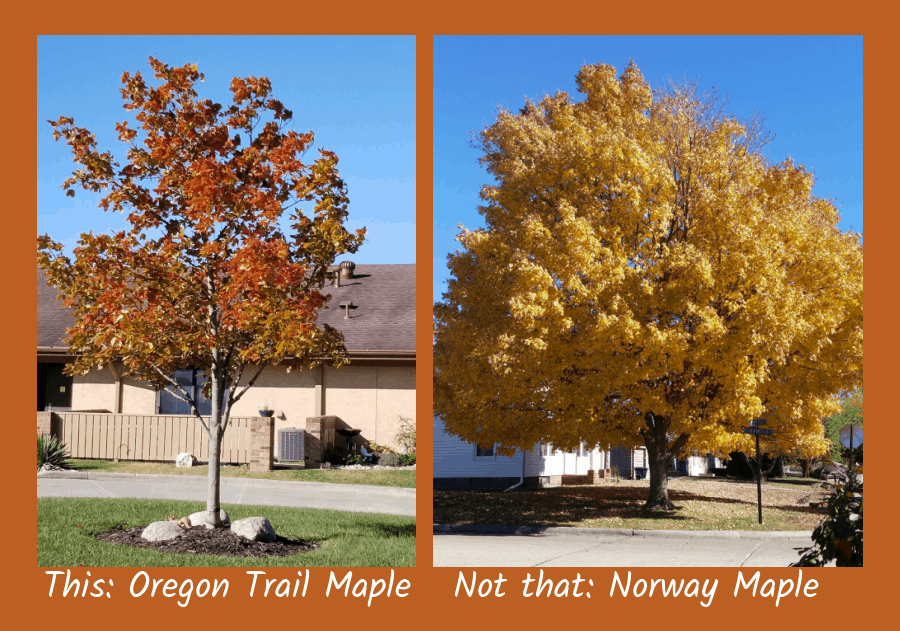
Plant this : Kentucky Coffeetree ‘Espresso’.
The Kentucky coffeetree has great scaly bark, pinnately-compound leaves, and is used by a variety of native insects and animals. It is very hardy, and the male selection ‘Espresso’ is a great landscape tree. The flowers are also used by local pollinators and honeybees.
Not that : Tree of Heaven. This invasive tree from Asia is very quick growing and will sprout up just about anywhere, even in sidewalk cracks. It can become difficult to remove once mature, and even chemicals rarely affect it. It produces hundreds of seeds per plant, yearly. The leaves and stems when crushed, smell like rotten peanut butter.
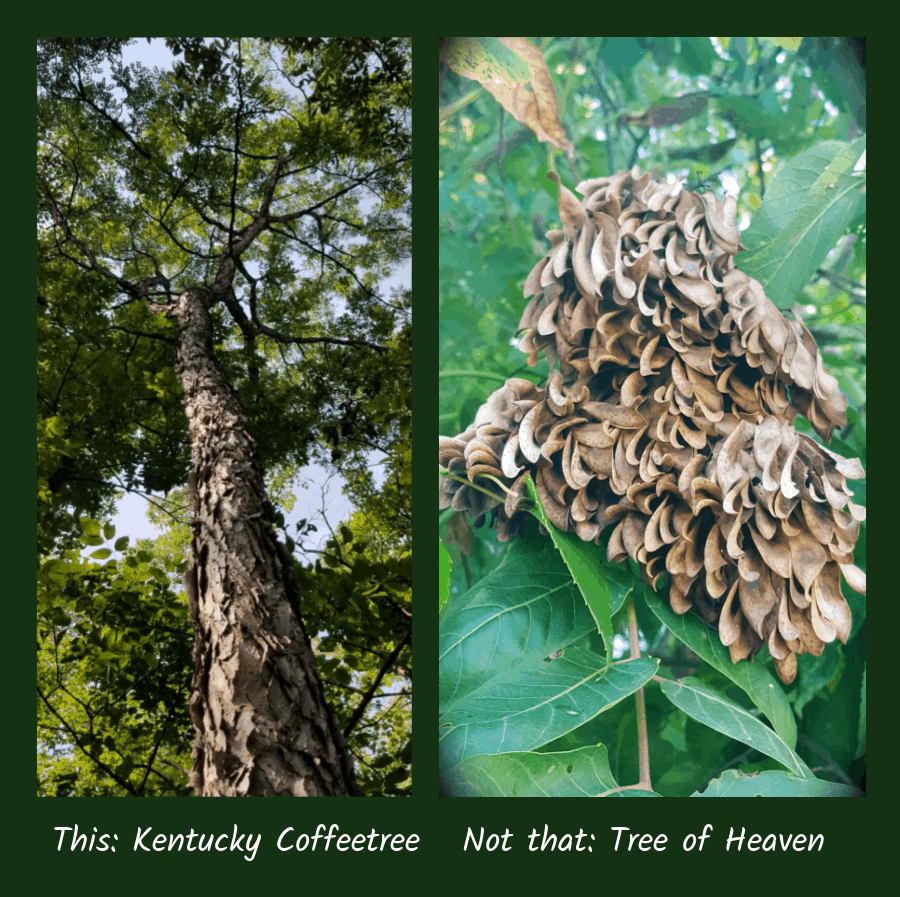
Plant this : Pagoda Dogwood
The pagoda dogwood, Cornus alternifolia, is native to the Eastern United States. It has white flowers in spring, usually in late April in Kansas. It flowers a couple weeks after callery pear, but the flowers are bright white and do not stink. Trees grows up to 30 feet tall and 15 to 20 feet wide. Many insects us it as a food source, as well as birds and mammals.
Not that : Callery pear cultivars. ‘Bradford” is one of the cultivars of the callery pear. These invasives from Asia are considered ornamental because their fruit is small and round, and their flowers are white. However, the seeds they produce are eaten by birds and transferred across the countryside. Seedlings grow quickly, sometimes 6 feet a year, and are thorny. No native insects feeds on the foliage, but it does get rust diseases, making them quite ugly.
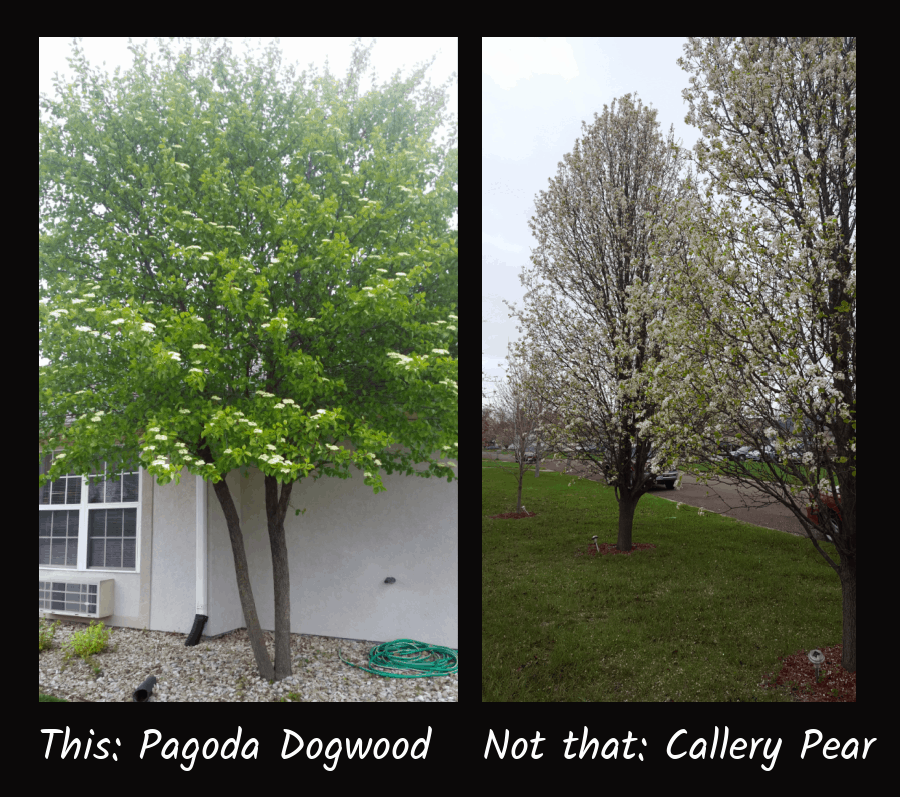
Shrub Invasives
There may be more invasive shrubs in the United States than anything else. Our native woodlands, just here on the eastern edge of Kansas are loaded with them, and we only have a few remnant oak-hickory forests. Think about all the native forests through the Midwest and New England states.
Plant this : Eastern Ninebark cultivars
The ninebark, Physocarpus opulifolius, has been bred for decades to develop many new cultivars. They are easy to keep trimmed and in shape. Leaf color can be maroon, dark red, green, or chartreuse yellow. Flowers are white or pink and very showy when in bloom. They are hardy and cultivars are easy to find. Many insects use the flowers for nectar and the leaves for food.
Not that : barberry cultivars. The barberry, with its tiny, painful thorns is a nightmare to prune and maintain. They produce loads of bright red berries, which are eaten by birds and “planted” across the landscape. Barberries develop a rust diseases that can damage heirloom and organic wheat and rye crops in farm fields.
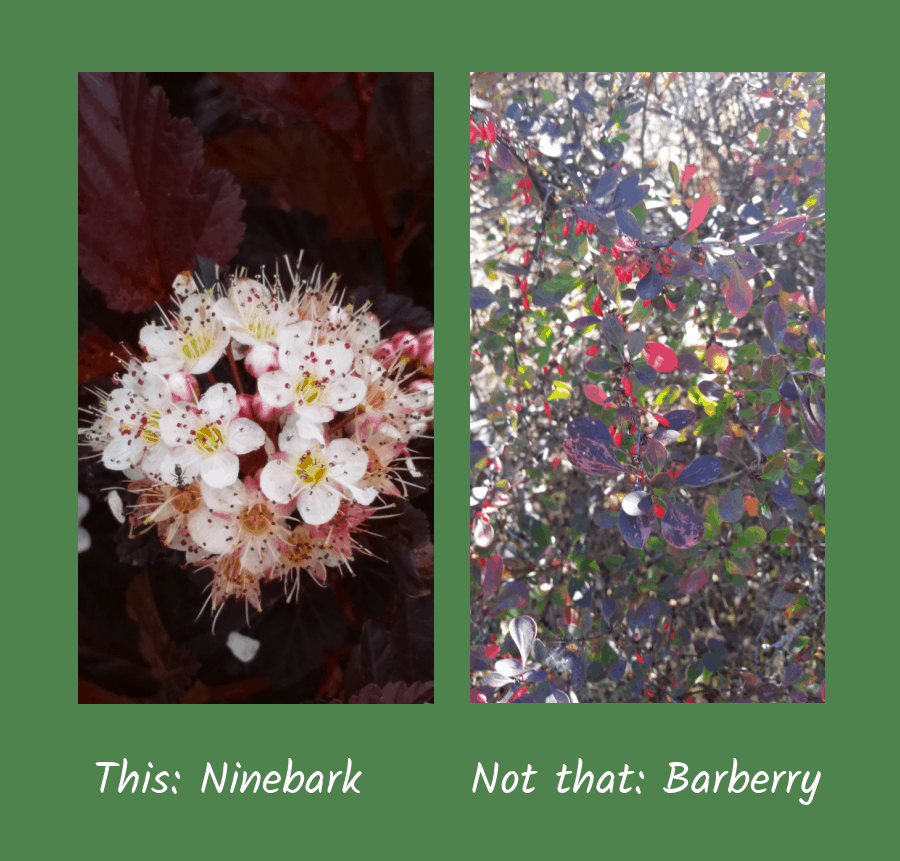
Plant this : Buttonbush
Buttonbushes grow native across the eastern half of the U.S., as well as in California. They are drought-tolerant, wet-tolerant, and do not have any annoying thorns. The flowers are phenomenal and the leaves are shiny green. Many native insects use the leaves and pollinators love the flowers. There are several cultivars available that are smaller than the native 15 feet tall and wide.
Not that : Firethorn. The firethorn, or pyracantha, is from Europe and Asia. Another invasive shrub with thorns. And these thorns continue to hurt after the initial prick. The bright orange berries are eaten by birds and dropped across the landscape. Because of the thorns, deer and other animals avoid eating the leaves.
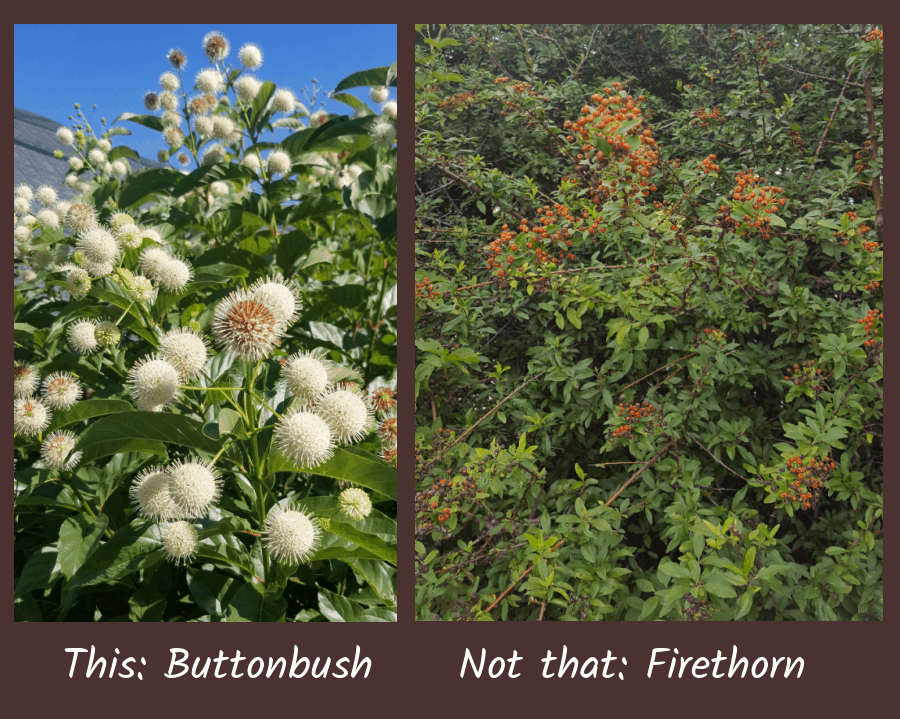
Plant this : Northern Bush Honeysuckle (Diervilla)
The northern bush honeysuckle is a native, thicket forming shrub that has become popular in the landscaping industry. Becuase it is utilized by native pollinators for nectar and insects for food, it is recommended. It grows 2 to 4 feet tall and wide. The flowers are fragrant, and fall color is excellent. Diervilla is hardy in zones 3 to 8 and there are many new cultivars.
Not that : Older butterfly bush cultivars. Older varieties of the favorite butterfly bush will produce viable seeds that are spread across the landscape. This shrub from China is great for pollinators, but not so great for insects needed a plant to lay eggs on. Also, it reseeds. There are some newer cultivars that are reported to be sterile.
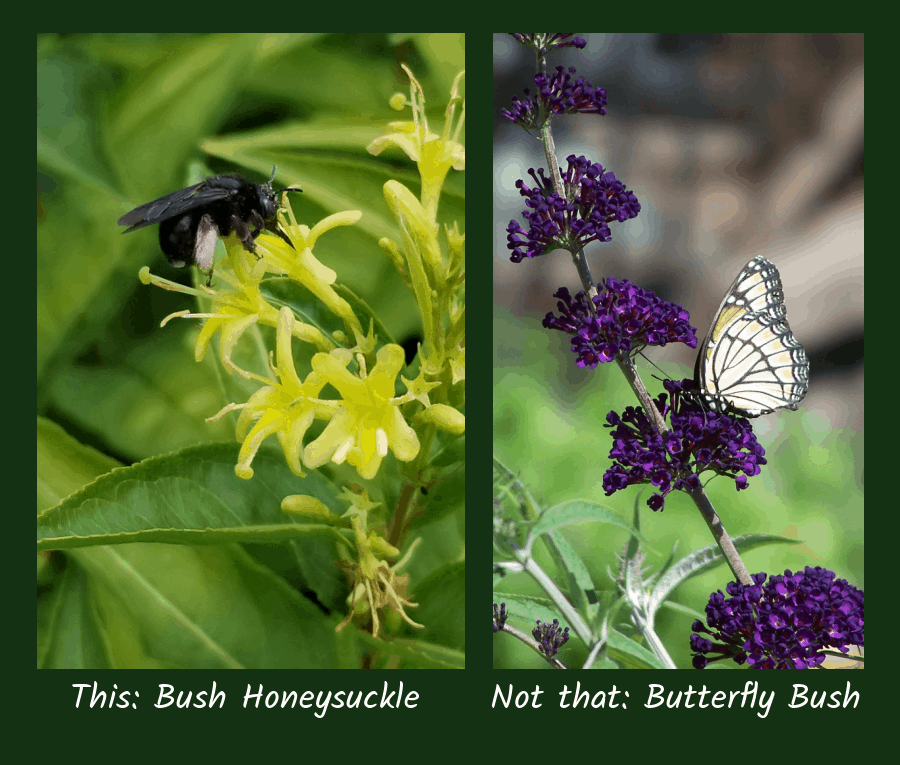
Plant this : Virginia Sweetspire
Itea virginica, sweetspire, is a native shrub that is great for hedges, borders, and pollinators. The very fragrant mid-spring flowers are dropped across the 3 to 5 foot tall plants. There are several great cultivars in the green industry. Fall foliage is red, purple, and orange. It is both drought and wet tolerant.
Not that : flowering quince. Flowering quince is an old-fashioned favorite from China, which forms dense thickets of thorny plants. While there are new cultivars with less or no thorns, the plant is still an alternate host for cedar-quince rust. No native insects eat the leaves and few animals eat the hard, gritty fruits.

Plant this : Bottlebrush (Fothergilla)
Native to the southeastern United States, bottlebrush is an excellent spring flowering shrub for part shade. It grows just 2 to 5 feet tall, depending on which cultivar you pick. The creamy white flowers are shaped like a bottlebrush, and very fragrant. Native bees use the flowers for nectar while a few insects eat the leaves. Fall color is reddish orange.
Not that: Forsythia. More invasives from Asia and Europe. Forsythia has long been planted for its early spring flowers, which often get killed by late freezes. It is easy to prune, but produces viable seeds which take over in the native landscapes. No native insects use the leaves for food, and the fall color is brownish purple.
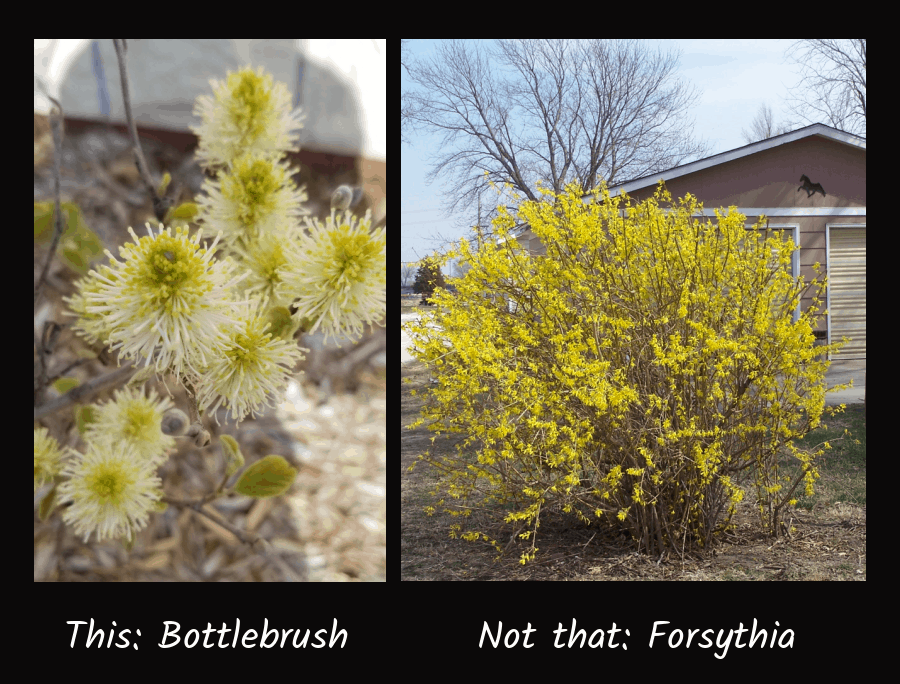
Plant this : Black Chokeberry
Black chokeberries are great additions to your garden. Not only do they have shiny green leaves and beautiful white flowers, they also have great orange to red fall color. The black berries are great for juicing because of their high vitamin C and antioxidant levels. There are many cultivars that grow in size from 1 to 10 feet tall and wide.
Not that : burning bush. Euonymus alata, the burning bush is an invasive plant from Asia. The berries are eaten by birds and spread throughout native woodlands. I have even seen an increase in them in our local woods here. The only thing they have going is their bright red fall color.
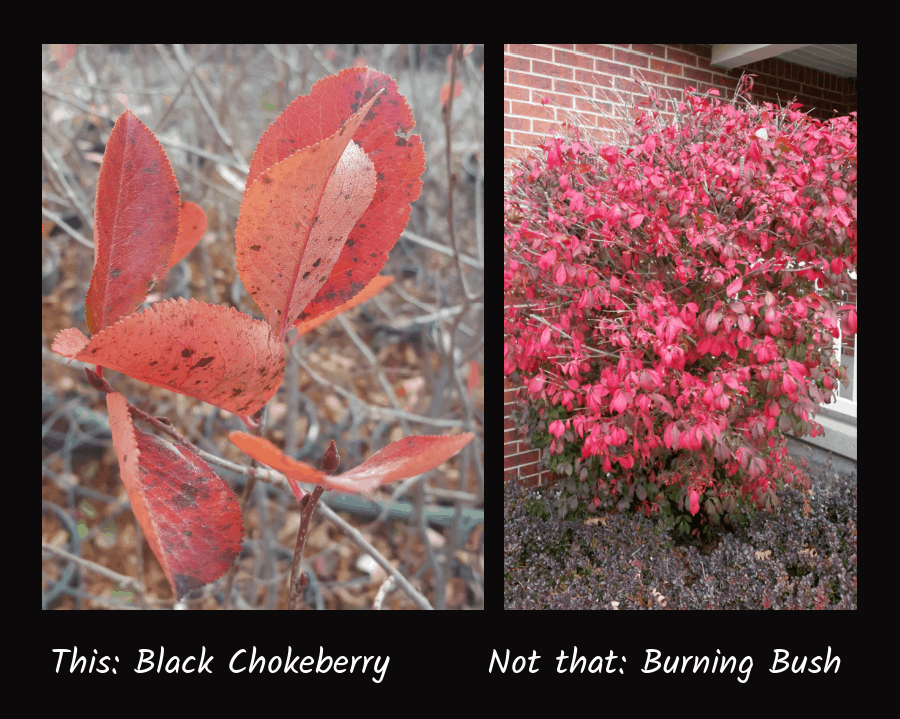
Vining and Perennial Invaisves
It harder to see how invasives that are vines or grasses affect our own landscapes, but they do. In the long run, eliminating these nonnatives from the landscape will improve the health of your local ecosystems.
Plant this : Switchgrass
Native grasses like switchgrass benefit lots of animals in the landscape, especially grass skippers and prairie birds. The seeds are full of fats and are great forage for birds in winter. In the garden, switchgrass stands vertical and there are many cultivars you can choose from. Switchgrass is easy to cleanup in spring or fall, and has no sharp edges.
Not that : pampas grass. Native to South America, these invasive grasses are difficult to cleanup in spring or fall, mainly because they have fishhook like edges on the grass leaves, which dig into your hands. It is for this reason that herbivores do not eat the leaves. the seeds spread by wind and water and come up all over the landscape.
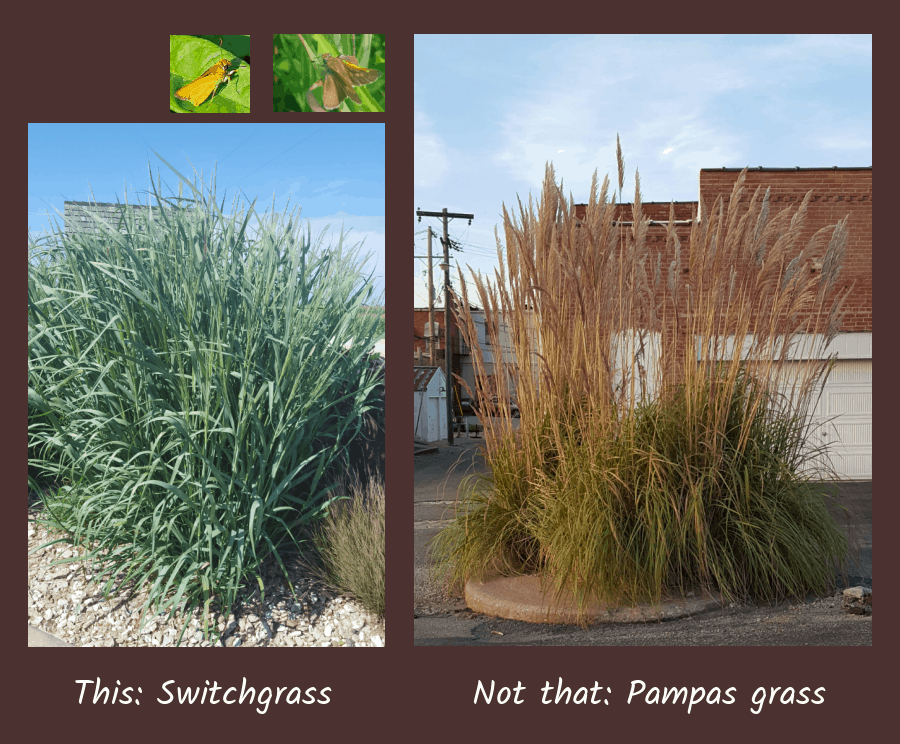
Plant this : Prairie Dropseed
This native grass has an open, fountain-like shape. It is tough and hardy, and the seeds are utilized by birds. It grows 1 foot tall by 2 feet wide. In spring you can either burn the grasses down or cut them off easily with pruners or shears. There are a few cultivars becoming available as this grass gains in popularity.
Not this : fountain grass. From Africa, this invasive but pretty grass has been used for years in many home gardens. However, it reseeds easily and has no natural predators. I have seen hundreds of acres of fountain grass invading the natural landscape of western Hawaii, where cattle ignore it. Difficult to cleanup in spring because of the location of the crown, it can be messy in the garden.
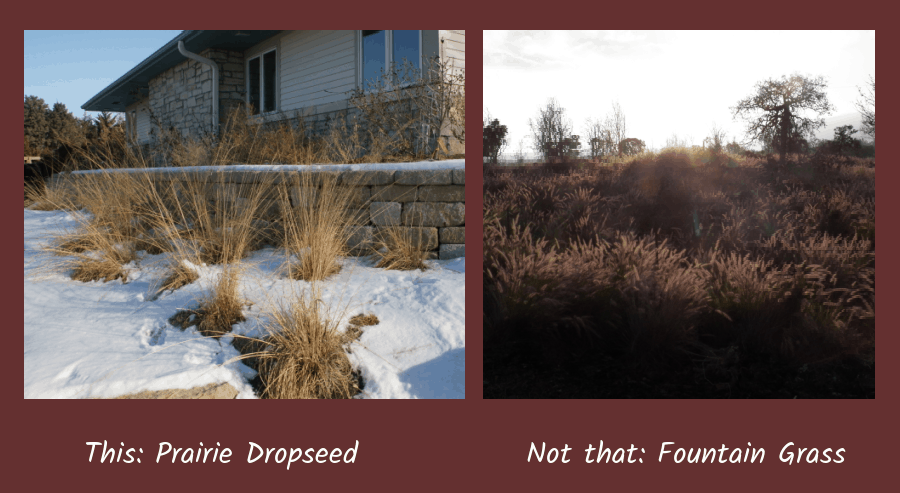
Plant this : Trumpet Honeysuckle
Using honeysuckle vines in the garden on a trellis or arbor is something many of us gardeners like. But some honeysuckles are native and some are not. Trumpet honeysuckle (Lonicera sempervirens) has many cultivars in the green industry. Native honeysuckles are utilized by both birds and insects.
Not that : Japanese honeysuckle. Lonicera japonica, which is from Japan, is invasive in many native woodlands. Difficult to eradicate, even with herbicides, it drowns out native vegetation quickly. In my own backyard, I have been fighting it since we moved there.
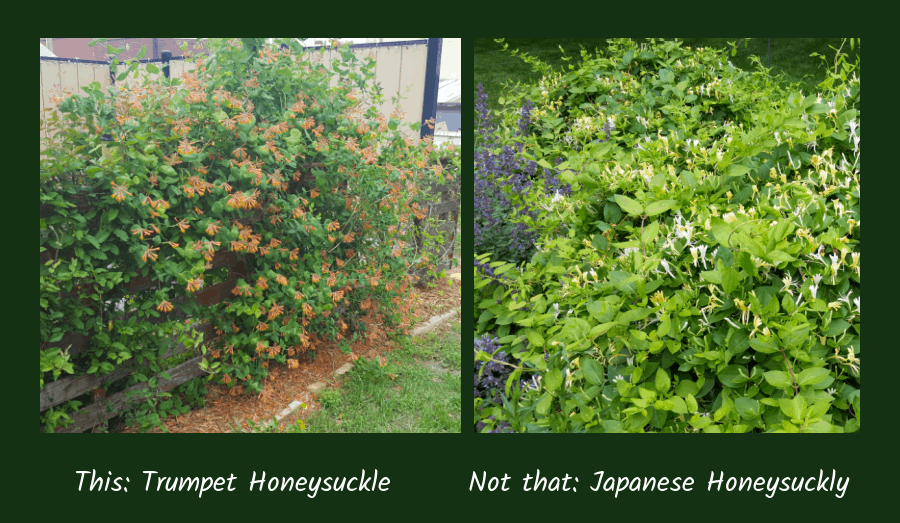
Conclusion
Invasives are everywhere, and if we do not stay informed on what they are, we will be part of the problem. Be vigilant in your own gardening, and remove as many invasives as possible. Its not the quantity of plants in the garden, but the quality.
Happy planting!
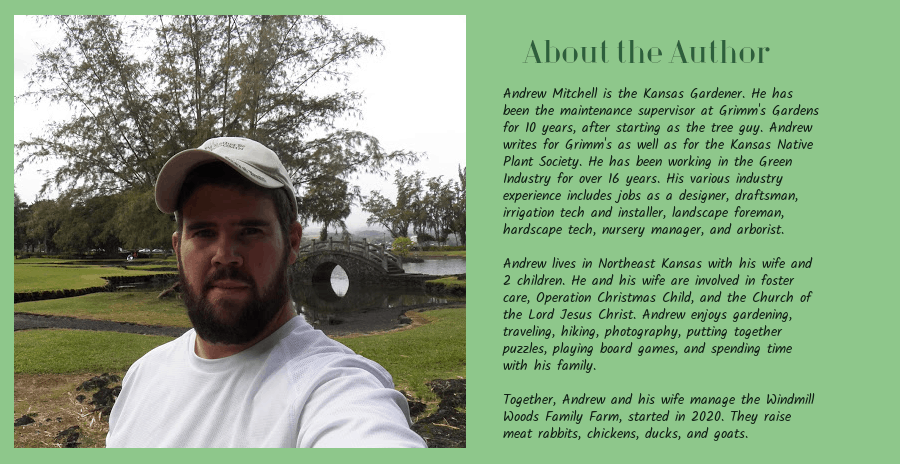
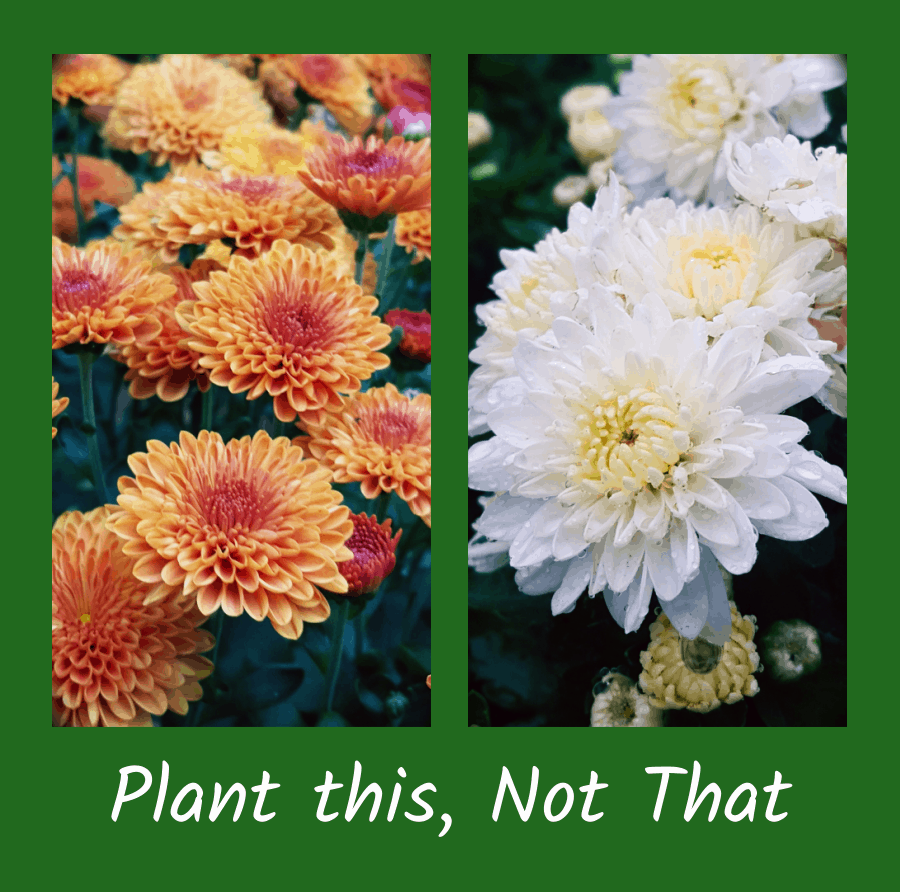



Thank you for posting this. It is very helpful. I would like to add that the golden raintree is invasive here in zone 6a. We live near a nature preserve and have an easement which forbids invasives. The naturalist recommended we (and some friends whose property is under a similar easement) remove two golden raintrees the previous owners had planted. We did as instructed but were dubious. Until we started to see the seedlings everywhere. Our friends had the same thing happened. It has been three years and I still occasionally find one. So glad they caught it when they did!
Very informative!